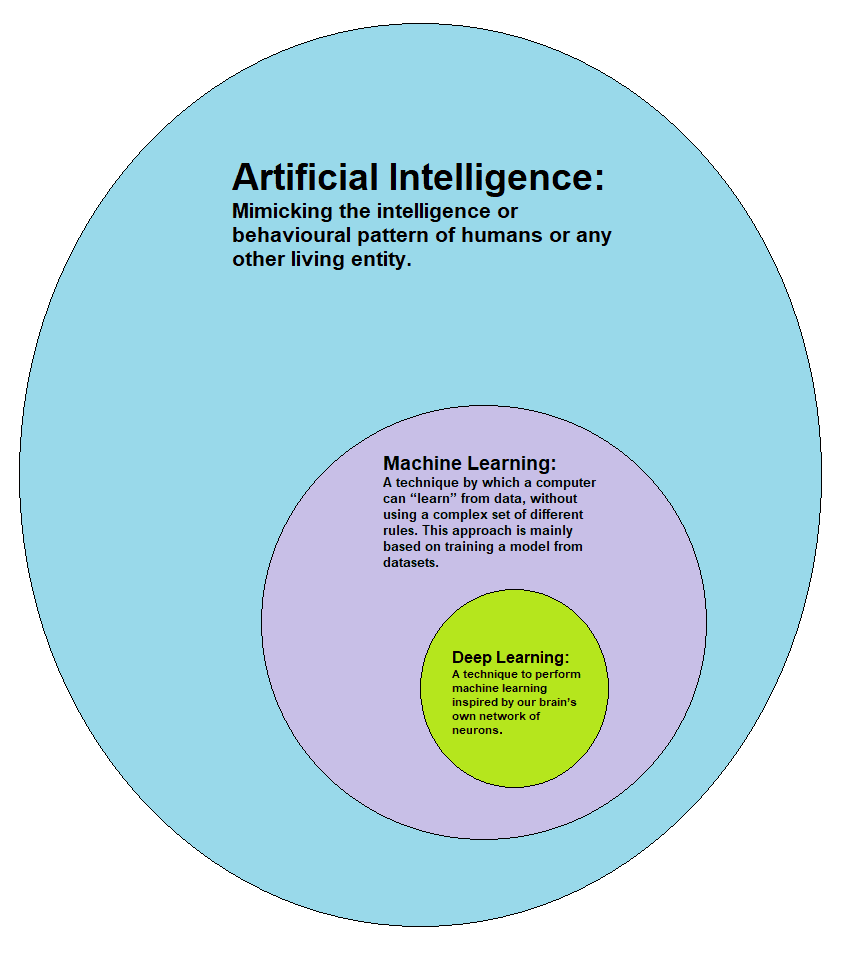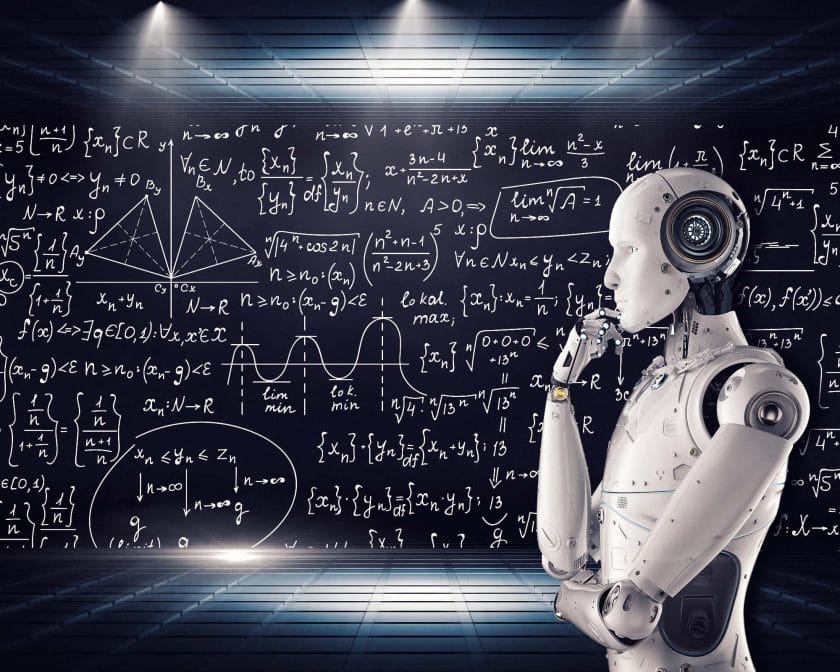Deep learning AI is a powerful technology that allows machines to learn and improve from experience, just like humans. It involves training artificial neural networks to recognize patterns in data, enabling them to make complex decisions and predictions with remarkable accuracy. In this article, we will explore the basics of deep learning AI and its applications in various industries.
Understanding Deep Learning AI: Definition and Key Components
As an AI expert at Prometheuz, I am often asked to explain deep learning AI to people who have little to no technical background. In simple terms, deep learning is a subset of machine learning that involves training artificial neural networks with large amounts of data to enable them to recognize patterns and make predictions. The key components of a deep learning system include:
Neural Networks:
These are the building blocks of a deep learning system. Neural networks are modeled after the human brain and consist of layers of interconnected nodes or neurons that process information.
Training Data:
A deep learning model requires vast amounts of data to be trained effectively. This data should be diverse and representative of the real-world scenarios that the model will encounter.
Loss Function:
This function measures how well the model is performing during training by comparing its output with the expected output.
Optimization Algorithm:
This algorithm adjusts the weights and biases in the neural network during training to minimize the loss function.
Deep learning has revolutionized many industries, including healthcare, finance, and transportation. It has enabled us to develop systems that can accurately diagnose diseases, predict stock prices, and even drive cars autonomously.
How Deep Learning Differs from Traditional Machine Learning
Traditional machine learning algorithms rely on handcrafted features or rules that are designed by humans. These features are then fed into a machine learning model, which uses them to make predictions or classify data. However, this approach has limitations because it relies heavily on human expertise and may not be able to capture all relevant information in complex datasets.
In contrast, deep learning algorithms use neural networks that can automatically learn features from raw data without any human intervention. This allows for more accurate predictions and better performance on complex tasks such as image recognition and natural language processing.
Another key difference is that deep learning models require much more data than traditional machine learning models. This is because neural networks have many parameters that need to be tuned during training, and more data helps to prevent overfitting.
The Role of Neural Networks in Deep Learning AI
Neural networks are the backbone of a deep learning system. They are modeled after the human brain and consist of layers of interconnected nodes or neurons that process information. Each neuron receives input from other neurons in the previous layer, performs a calculation, and passes its output to the next layer.
The architecture of a neural network can vary depending on the task it is designed to perform. For example, a convolutional neural network (CNN) is often used for image recognition tasks because it can detect spatial patterns in images, while a recurrent neural network (RNN) is better suited for tasks that involve sequential data such as speech recognition or language translation.
During training, the weights and biases in the neural network are adjusted using an optimization algorithm to minimize the loss function. This process is repeated until the model achieves satisfactory performance on a validation dataset.
Real-World Applications of Deep Learning AI
Deep learning has revolutionized many industries by enabling us to develop systems that can accurately analyze complex datasets and make predictions based on them. Some real-world applications of deep learning include:
Healthcare:
Deep learning algorithms have been used to develop systems that can accurately diagnose diseases such as cancer, Alzheimer’s disease, and diabetic retinopathy by analyzing medical images.
Finance:
Deep learning models have been used to predict stock prices, identify fraudulent transactions, and improve credit risk assessment.
Transportation:
Autonomous vehicles rely heavily on deep learning algorithms for tasks such as object detection, lane detection, and path planning.
Training a Deep Learning Model: Data Requirements and Process
Training a deep learning model requires vast amounts of data that should be diverse and representative of the real-world scenarios that the model will encounter. The process typically involves the following steps:
Data Collection:
The first step is to collect relevant data from various sources such as databases, sensors, or web scraping.
Data Preprocessing:
The collected data needs to be cleaned, normalized, and transformed into a format that can be used by the deep learning model.
Model Architecture:
The next step is to design the architecture of the neural network based on the task it is designed to perform.
Training:
During training, the weights and biases in the neural network are adjusted using an optimization algorithm to minimize the loss function.
Evaluation:
The trained model is evaluated on a validation dataset to measure its performance and make any necessary adjustments.
Challenges Faced When Working with Deep Learning Algorithms
Despite their many benefits, deep learning algorithms also pose several challenges for developers:
Data Quality:
Deep learning models require high-quality data that is diverse and representative of real-world scenarios. Poor quality data can lead to inaccurate predictions or biased models.
Computational Resources:
Training a deep learning model requires significant computational resources such as GPUs or cloud computing services. This can be expensive and time-consuming.
Interpretability:
Deep learning models can be difficult to interpret because they are often black boxes that lack transparency. This makes it challenging to understand how they arrived at their predictions or identify any biases in their decision-making process.
Improving upon Existing Deep Learning Models: Research and Development
As with any technology, there is always room for improvement when it comes to deep learning models. Research and development efforts are focused on improving the accuracy, speed, and interpretability of these models.
One approach is to develop new architectures that are better suited for specific tasks. For example, attention mechanisms have been used to improve language translation by allowing the model to focus on relevant parts of the input sequence.
Another approach is to develop new optimization algorithms that can train models faster or more efficiently. For example, stochastic gradient descent with momentum has been shown to be an effective way to speed up training.
Finally, efforts are being made to improve the interpretability of deep learning models by developing techniques such as saliency maps or adversarial examples that can help identify biases or explain how a model arrived at its predictions.
Natural Language Processing and Understanding with Deep Learning AI
Natural language processing (NLP) is a field of AI that focuses on enabling machines to understand and process human language. Deep learning has revolutionized NLP by enabling us to develop models that can perform tasks such as sentiment analysis, language translation, and question answering.
One approach is to use recurrent neural networks (RNNs) or transformers for tasks such as language modeling or machine translation. These models can learn contextual information from text by processing it in sequential order.
Another approach is to use pre-trained language models such as BERT or GPT-3. These models have been trained on vast amounts of text data and can be fine-tuned for specific NLP tasks with relatively little additional training data.
The Intersection of Reinforcement Learning and Deep Learning AI
Reinforcement learning (RL) is a subfield of AI that focuses on developing agents that can learn from their environment through trial-and-error interactions. RL has many applications in robotics, gaming, and autonomous systems.
Deep learning has also been used in RL to enable agents to make decisions based on high-dimensional sensory inputs such as images or audio. For example, deep Q-networks (DQNs) have been used to develop game-playing agents that can outperform human players in games such as Atari and Go.
Another approach is to use policy gradient methods to train deep reinforcement learning models. These models learn a policy that maps observations to actions by optimizing a reward function.
Ethical Considerations in Developing and Deploying Deep Learning Models
As with any technology, there are ethical considerations that must be taken into account when developing and deploying deep learning models. Some of these include:
Privacy:
Deep learning models may collect and process sensitive personal data, which raises concerns about privacy and data protection.
Transparency:
Deep learning models can be difficult to interpret, which makes it challenging to understand how they arrived at their predictions or identify any biases in their decision-making process.
Fairness:
Deep learning models can perpetuate existing biases if they are trained on biased data or if the training process is not designed to address fairness concerns.
It is important for developers to take these ethical considerations into account throughout the development lifecycle of a deep learning model.
The Evolution of Artificial Intelligence: Focus on Deep Learning
The field of artificial intelligence has evolved significantly over the past few decades, with deep learning emerging as one of the most promising approaches for enabling machines to perform complex tasks. The rise of big data and advances in computing power have made it possible to train large neural networks on vast amounts of data, leading to breakthroughs in areas such as computer vision, natural language processing, and robotics.
Looking forward, it is likely that we will see continued progress in deep learning research and development. This could lead to new applications in areas such as healthcare, finance, and transportation, as well as improvements in the accuracy and interpretability of deep learning models.
Learning from Neural Networks in a Deep Learning System
One of the key benefits of deep learning systems is that they can learn from data without any human intervention. This is made possible by the use of neural networks, which are modeled after the human brain and can automatically learn features from raw data.
During training, the weights and biases in the neural network are adjusted using an optimization algorithm to minimize the loss function. This process is repeated until the model achieves satisfactory performance on a validation dataset.
Once trained, a deep learning model can be used to make predictions on new data with high accuracy. This ability to learn from data without any human intervention makes deep learning systems highly valuable for tasks such as image recognition, natural language processing, and autonomous driving.
The Future of Capabilities and Applications for Deep Learning AI
As deep learning continues to evolve, we can expect to see new capabilities and applications emerge. Some potential areas for growth include:
Explainable AI:
Efforts are being made to develop techniques that can help explain how a deep learning model arrived at its predictions. This could enable better transparency and accountability in AI systems.
Federated Learning:
Federated learning is a technique that allows multiple devices or organizations to train a shared model without sharing their data. This could enable more privacy-preserving AI systems.
Meta-Learning:
Meta-learning involves developing models that can learn how to learn. This could enable more efficient training of deep learning models and lead to breakthroughs in areas such as few-shot learning or transfer learning.
In conclusion, deep learning AI is a subset of machine learning that mimics the human brain to process complex data and make accurate predictions. If you’re looking to leverage the power of AI for your business, we’ve got you covered! Contact us today and check out our range of AI services to take your business to the next level. Let’s revolutionize the world together!

What is the difference between AI and deep learning?
Machine learning and deep learning are two categories of artificial intelligence (AI). Machine learning is a type of AI that can adapt and learn with minimal human intervention. Deep learning is a subcategory of machine learning that uses artificial neural networks to replicate the learning process of the human brain.
What is deep learning and examples?
Deep learning is a type of machine learning that trains computers to learn like humans do, through examples. This technology is critical for autonomous vehicles, allowing them to identify stop signs and differentiate between pedestrians and objects like lampposts.

How deep learning works in AI?
The process of deep learning involves creating computational models with multiple layers that can analyze complex data structures and create abstractions to represent them. This allows the networks to learn and discover intricate patterns within the data it encounters.
What is deep learning actually used for?
Deep learning is a type of machine learning that reduces the need for data pre-processing. It can analyze unstructured data, such as text and images, and automate feature extraction, eliminating the need for human experts.
Should I learn AI or deep learning first?
If you are interested in pursuing areas like natural language processing, computer vision, or robotics related to AI, then it would be advisable for you to prioritize learning artificial intelligence over machine learning.
Which programming language is used for AI?
Python and Java are popular programming languages for Artificial Intelligence (AI) applications. The selection between these two languages largely depends on how you intend to integrate AI. For instance, if you are working on data analysis, Python would likely be the better choice.







